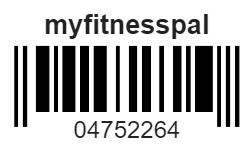Full of Mediterranean flavors, this Salmon Couscous Salad is a heart-healthy way to get a good amount of protein and omega-3 fatty acids while indulging in a mouth-watering mix of feta cheese, fresh herbs, zesty lime, and other traditional Greek ingredients.
This is a great post-run or post-workout recovery meal as it contains carbohydrates and proteins to refuel and repair your muscles.

Salmon Couscous Salad
- Total Time: 33 minutes
Description
Full of Mediterranean flavors, this Salmon Couscous Salad is a heart-healthy way to get a good amount of protein and omega-3 fatty acids while indulging in a mouth-watering mix of feta cheese, fresh herbs, zesty lime, and other traditional Greek ingredients.
A Quick, Easy, and Nutritious Salad
Aside from being delicious, this recipe has the added benefit of being quick to make. From the time you start preheating the oven until the salmon is done cooking, you have time to prepare the rest of the ingredients.
And while my Salmon Couscous Salad is great and eaten right away, it is also a great meal prep recipe because it keeps well, and the mix of lime, feta, and fresh herbs only gets more flavorful with time. With 40 grams of protein per serving but less than 600 calories and using easy-to-find ingredients, you can indulge in it every week knowing you’re feeding your body top-quality fuel.
A Taste of the Mediterranean
Because Salmon Couscous Salad is so quick and easy to make, it pays to source high-quality ingredients to make it shine.
For the salmon, Chinook or King Salmon is considered by most to be the very best-tasting type. It cooks up nice and tender in the oven thanks to its rich, high-fat flesh that also boasts a pleasant ocean flavor. If you can’t find it or it’s a bit on the pricey side, Sockeye salmon is a fine alternative.
Either way, try to select wild varieties only from sustainable sources. Alaskan salmon is considered to be a safe bet no matter the species. Rich in heart-healthy fatty acids, protein, and a long list of minerals and vitamins, salmon is an ingredient most nutritionists recommend you eat weekly.
The feta and Greek yogurt bring the creaminess of dairy coupled with a satisfying zesty and salty flavor that almost removes the need for any added salt. It is generally best to buy feta by the block and crumble it at home, as the pre-crumbled kind has non-clumping additives and tends to be drier.
The same goes for the yogurt; the brands with the fewest ingredients will be best, but it’s up to you if you prefer full-fat or low-fat as long as no sugars are added.
Because the fresh herbs really bring all the flavors together, try to find nice, fresh bundles of parsley and mint. They are easy to grow indoors, so if this recipe is a winner, you might want to have your own supply to cut from as you make it!
More Tasty Variations
If you don’t have fresh salmon, you can substitute it with a couple of cans of salmon. Drain them, and proceed as directed. Couscous is easy to find and requires close to no cooking as it comes already pre-steamed.
If you have extra time, you can also use pearled or Israeli couscous. It is not the same product as regular couscous; it is bigger and needs to be cooked. But it provides a different texture and flavor and can be a fun alternative.
Arugula gives the dish a peppery, slightly spicy bite that goes great with the lime, but if you can’t find it, baby spinach is a good substitute.
Do you track your meals using MyFitnessPal? If so, simply scan the following barcode to quickly enter your item into your food tracking:
Ingredients
1 lb. (450 g) salmon filets
2 tablespoons olive oil
Salt and pepper
1 teaspoon ground cumin
½ teaspoon ground turmeric
1 lime, halved
1 lime, zested and juiced
1½ cups (260 g) couscous
1 cup (285 g) Greek yogurt
4 tablespoons water
½ cup (80 g) feta cheese, crumbled
1 cucumber, diced
4 tablespoons parsley, chopped
4 tablespoons mint leaves, chopped
1½ cups (40 g) arugula
2 green onions, sliced
Instructions
- Heat the oven to 400°F (200°C). Line a baking sheet with baking paper.
- Place the salmon filets, skin-side-down, on the baking sheet. Drizzle with olive oil, season with salt, pepper, ½ teaspoon of cumin, and ½ teaspoon of turmeric. Place the halved lime, cut-side up, next to the salmon.
- Place the baking sheet into the hot oven and roast the salmon for 18-20 minutes until cooked. Remove from the oven and set aside to cool slightly. Smaller filets will need a lot less cooking time, but if you see white fat coming out of the salmon and it is just starting to flake, it’s likely ready. Or, wait for the internal temperature to reach 140°F.
- In the meantime, cook the couscous according to the instructions on the packaging.
- Next, prepare the dressing by combining the yogurt, water, lime zest, juice, and whisk until smooth. Add the remaining ½ teaspoon of cumin, ¼ cup of feta cheese, the cucumber, and most of the parsley and mint. Season to taste with salt and pepper, mix and set aside until needed.
- Add the cooked couscous and arugula to the yogurt dressing and toss to combine. Remove the skin from the cooked salmon and flake it with a fork. Add the salmon to the couscous, and mix gently.
- To serve, squeeze the roasted lime over the salad, garnish with the green onions, and the remaining feta cheese, parsley, and mint.
- Prep Time: 15 minutes
- Cook Time: 18 minutes
- Category: dinner
Nutrition
- Serving Size: 4
- Calories: 582 grams
- Fat: 20 grams
- Carbohydrates: 58 grams
- Fiber: 4 grams
- Protein: 40 grams
- About the Author
- Latest Posts

Steve Carmichael is a running coach, sports performance coach, nutrition coach and has been a recreational runner for over 18 years. Steve holds multiple certifications as a certified running coach through the RRCA and USA Track and Field as well as he is a NASM certified personal trainer, and PN1-L1 certified nutrition coach.
Steve has been coaching since 2010 and has helped thousands of runners online and in the Central Ohio area maximize performance and run injury-free.
Steve is the founder of RunBuzz and Run For Performance.com. If you are interested in working with Steve though his online running and strength coaching services, feel free to reach out.


